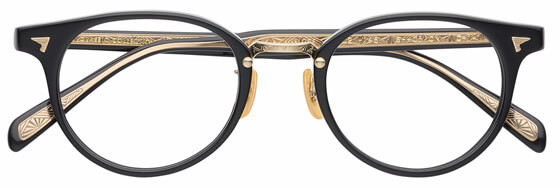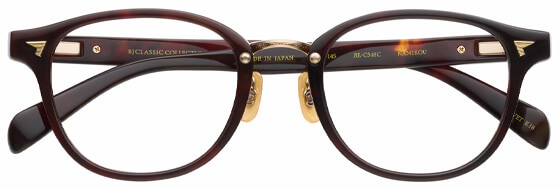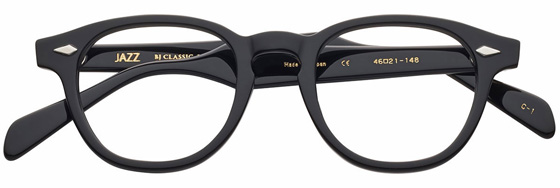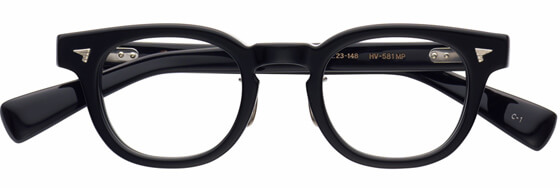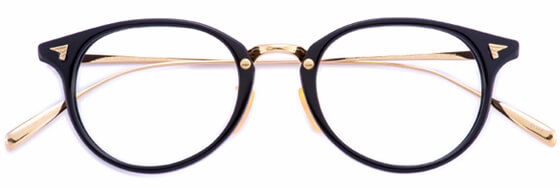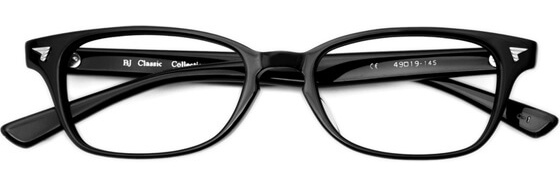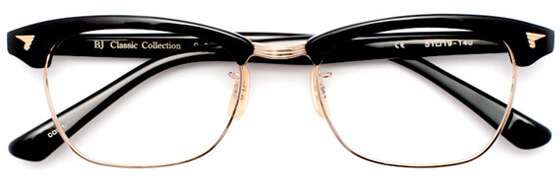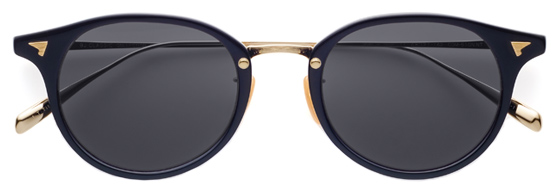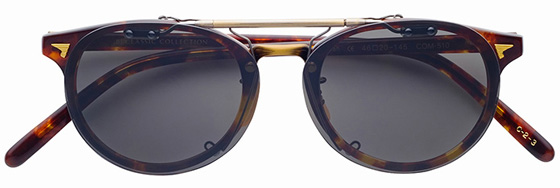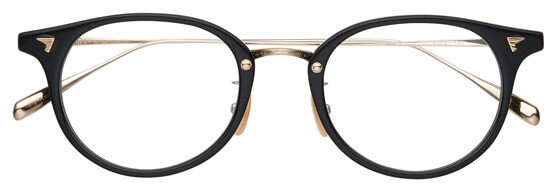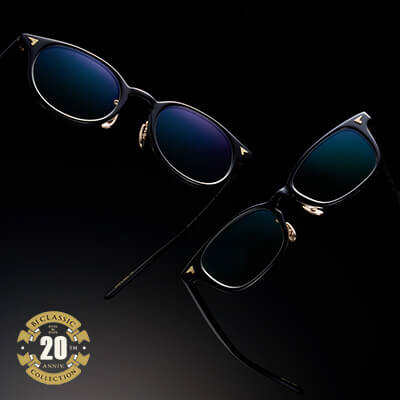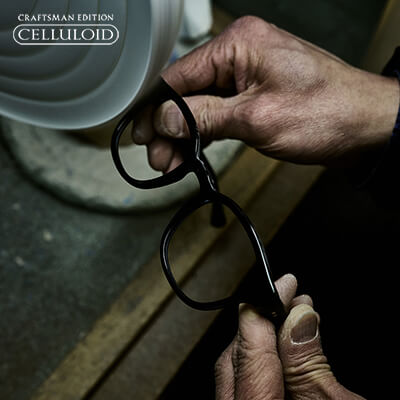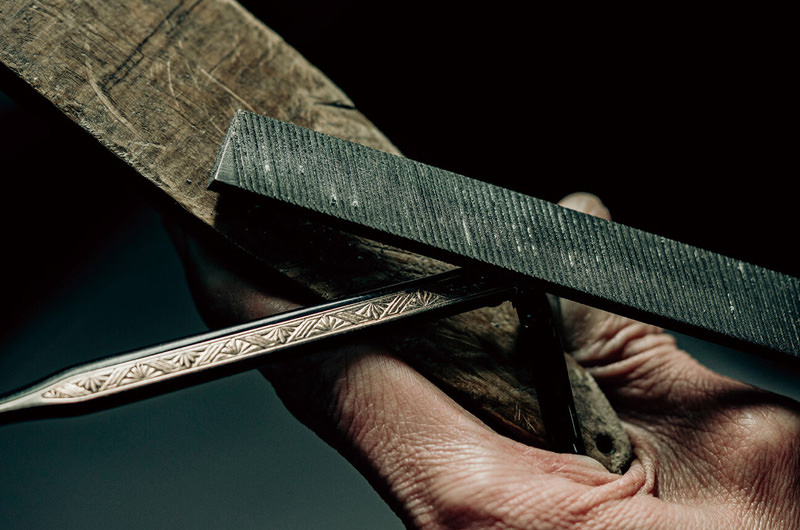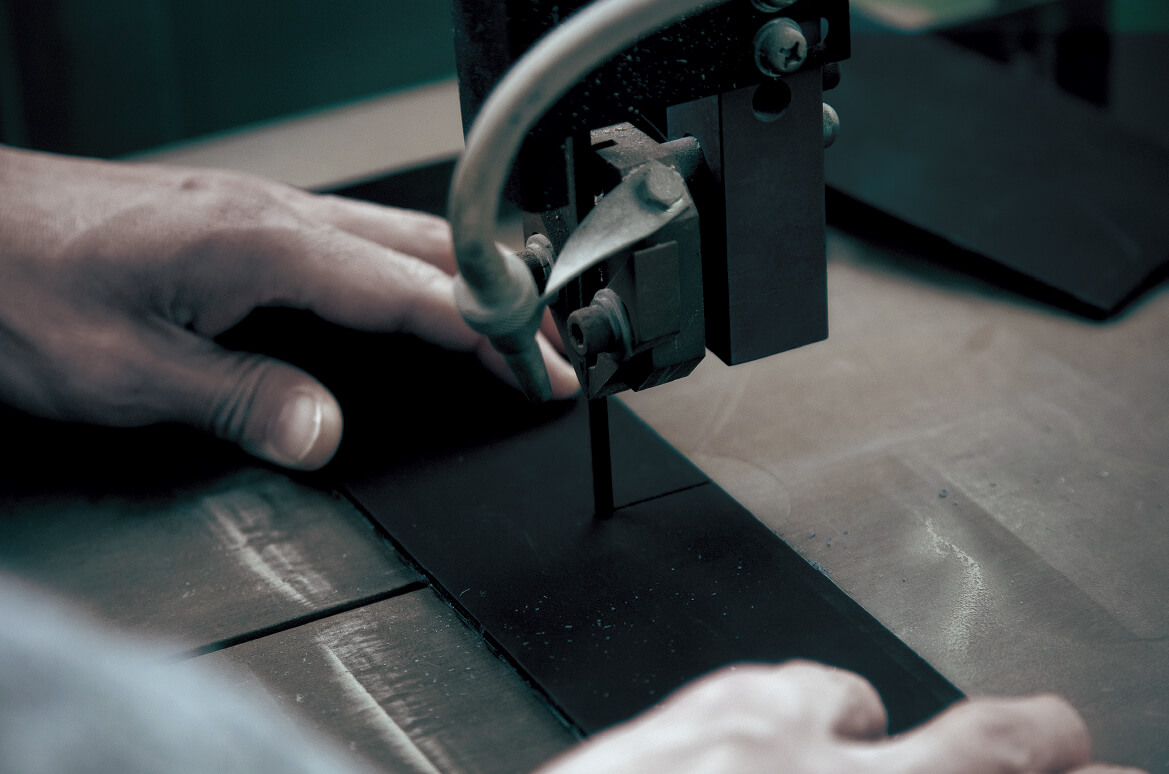
WORKFLOW
6 points representing
BJ's persistence
You can f ind BJ's persistence and attention to detail
in many areas other than in our celluloid frames, like P-501.
Here are our six details that only experts would recognize.
Caulking Pins
Caulking pins are all-handmade
Kashime pin made up piece by piece

Caulking pins that are as iconic as the front studs are all handmade.
First, we punch out 3mm diameter circles from thin metal plates, and then braze them before punching out again into star-shape. Next, we put them in a “Gara” (special rotary drum) to polish them, and repeat this process four times. After punching out into circles, we put them into the “Ara-Gara” and “Tsuya-Gara,”and then braze and punch out into a star-shape before polishing them four times to make our stars shine brighter.

Slotted Screws
Our screws embody “God is in the details”
A minus screw embodied “God is in detail”

When it comes to productive efficiency, you might want to use Philips screws, but we use slotted screws intentionally.
These offer a simple beauty, and boast a sophisticated, yet minimal design. With machined-slotted screws, we can make them flush with the end piece. The screws and the end piece look like as if they are integrated as one and, thereby, make our glasses look better overall.
Right now, machined (not forged) slotted screws account for only 10% of all screws used in our industry due to the production cost.
Additionally, the normal screw will get loosen due to vibration, but the hinge screw with resin prevents vibration that is the reason of loosening.
Resin melts duet to heat during the plating, therefore initially the screw without resin is installed till the plating is done, then it is replaced with another screw with resin.
Yet, by remaining persistent to our concept and values, we believe that using them allows us to make our products perfect.



Butterfly Nose Pads
We think that claiming any nose pads can fit anybody is a falsehood.
The nose pad that fits anyone doesn’t suit anyone in reality

Typical nose pads that are flexible often slip away from their ideal positions.
Yet, BJ’s butterfly nose pads are designed to go through the fitting process, so they are perfectly suitable for you. Now, we have a 100% titanium model in our lineup that allows you to have a luxury feel.

Titanium Temples (NT)
The f lexibility, stiffness, and intensity come from its high metal density.
The secret of flexibility elasticity and strength is high metal density

BJ’s titanium temples are made by adopting a method called “swaging” to 5-6 mm pure titanium round wires.
Swaging is a special method to improve metal density, springiness, flexibility, stiffness, and intensity by hitting and elongating round wires. After swaging, we flatten and trim each section (e.g. drop-end) before pressing several times to further enhance and strengthen the temple’s characteristics. These processes will sustain the holding power of the temples.

End Piece
Each end piece is screwed down from dif ferent sides to prevent loose temples.
Left-right reversal screw fixing prevent laxity of the temple

BJ’s product will lower your daily stress.
If both of your end pieces use a single screw fastened from the same side,
one of the screws will tend to loosen when you try on your frames because this always adds some tension in the same direction.
Yet, with BJ’s products, one end piece is screwed from the upside, while the other is screwed from the downside.
This traditional method is done to disperse the tension and keep the screws tight.


Hinge
We use three types of hinges, depending on the model
Distinguish the three types of hinge depending on the model

Depending on the model, we use three-layer hinges, five-layer hinges, or seven-layer hinges.
Generally, three-layer hinges are the most popular and often used even to the largest size. Yet, BJ uses seven-layer hinges
for the larger models to provide adequate strength.
Our high quality domestic hinges enable you to open and close the temples smoothly.
We are not after cost-reduction or production-efficiency, but are focused solely on product quality.


OTHERS
Craftman Edition
"SHINBARI"
Achieving the aspect of one of a kind thing by hand work of Sabae craftsmen.
The Entire Process of crafting
BJ CLASSIC COLLECTION
Celluloid Frames
BJ CLASSIC COLLECTION was born in the early 2000s. The celluloid frames takes about one year to be crafted, gaining its soul as eyewear.
6 points representing
BJ's persistence
You can find BJ's persistence and attention to detail in many areas other than in our celluloid frames, like P-501.

